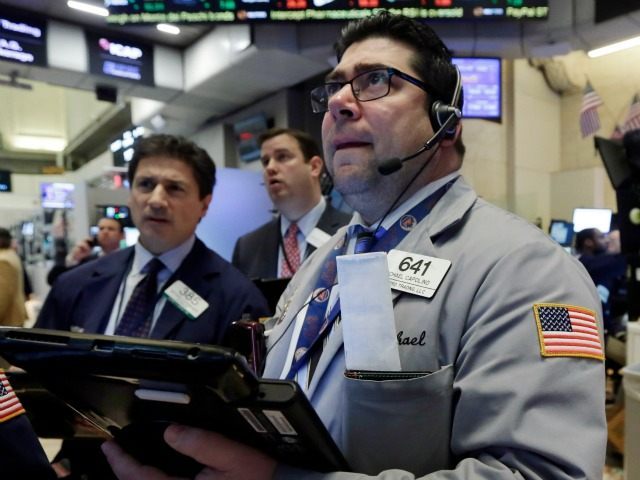With U.S. stocks tanking by over 500 points at one point on January 20, the only good news is the crash would be worse if America had already signed the Trans-Pacific Partnership.
A renewed worldwide selloff in stocks is being driven by fear that China’s “economic hard landing” will pull the rest of the world into a deflationary recession due to the interconnected nature of globalized trade. But the negative impacts of China’s demise would be magnified if America had signed the Trans-Pacific Partnership (TPP) trade agreement unveiled on November 5 for a 90-day review period ending on February 4.
China is not an initial participant in the 12-nation TPP “free-trade” deal that includes the United States, Australia, Brunei, Canada, Chile, Japan, Malaysia, Mexico, New Zealand, Peru, Singapore and Vietnam. China is the major trading partner for each of the Asian participants and TPP provisions allow China to administratively join later.
At 5,544 pages long, the treaty is twice as long as Obamacare’s nationalization of the U.S. healthcare system. Provisions of the extremely complex treaty would cause a deeper integration of U.S. and Asian banking; and provide an economic windfall for Hollywood entertainment interests, the pharmaceutical industry, and Silicon Valley corporations that out-source manufacturing to Asia.
But as Breitbart News reported earlier this week in an article titled “Devaluation,” China’s central bank appears to have dumped a record $47 billion of U.S. Treasuries during the first two of 2016 in a crisis effort to slow the devaluation of their yuan currency that is sparking twin corporate and banking crises.
Most people assume a weak currency makes China’s export-driven manufacturing more competitive. But that assumption fails to understand multi-national corporations and domestic state-owned-enterprises that produce in China have been borrowing from Chinese banks and “shadowing banks” in loans issued in U.S. dollars to lock in much lower interest rates than borrowing in Chinese currency. With the U.S. dollar rising 10 percent since the summer, China “dollar borrowers” now owe 10 percent more.
Nobody knows how many trillions of U.S. dollars have been borrowed in China, but total borrowing in the “Red Dragon” since 2008 has been expanding almost twice as fast as the 7 percent annual growth rate reported by the Chinese authorities. Total public and private debt doubled to over $30 trillion and China’s ratio of debt to GDP has risen to 270 percent. That level is almost as high as the economic basket-case called Greece.
The real Chinese growth rate is undoubtedly smaller and the debt ratio is undoubtedly higher. Lombard Street Research estimates China’s real growth rate has fallen to a 2.3 percent rate since mid-2014, meaning China’s debt grew by $7 trillion faster than GDP.
The bulk of the lending to Chinese and Asian companies has come from Chinese and Asian banks. But the wonderful world envisioned by the Trans-Pacific Partnership would quickly have resulted in the U.S. banking system dominating lending across Asia.
The Chinese economic “hard landing” is exactly what consumers around the world need, because driving down sky-high commodity and energy prices will result in a huge wealth transfer of incomes from producers of natural resources to consumers.
There are allot of huge corporations suffering pain as their natural resource investments and trade with Asian trade plummets. But if the Trans-Pacific Partnership had already been passed and the U.S. banking system was thoroughly integrated throughout Asia, it would be America that was also be suffering the full pain of an Asian crash.

COMMENTS
Please let us know if you're having issues with commenting.